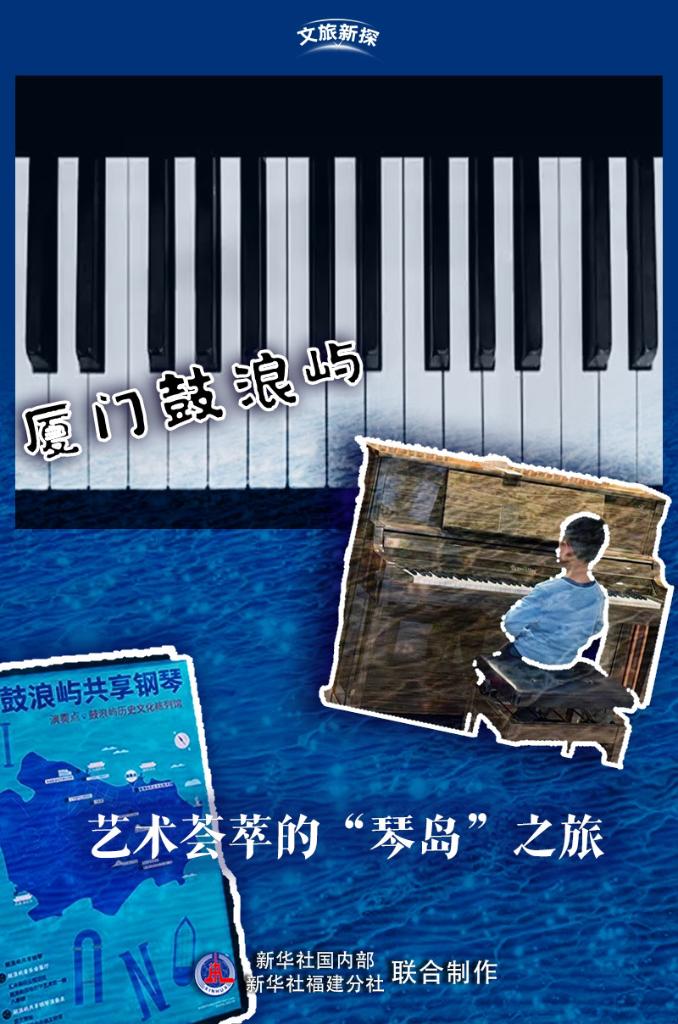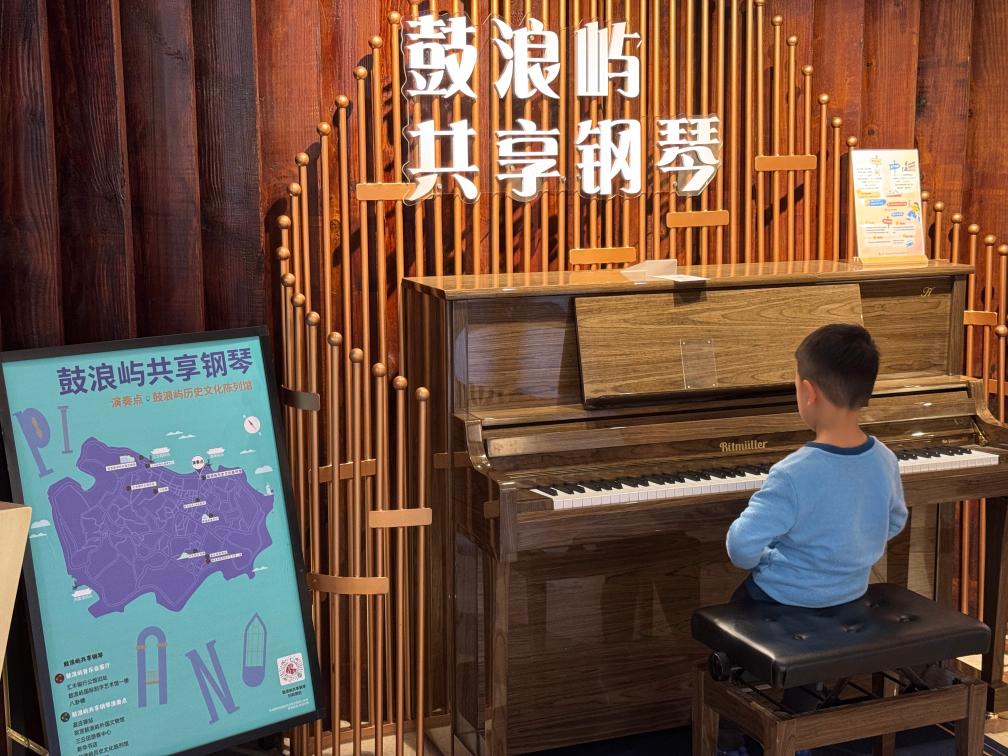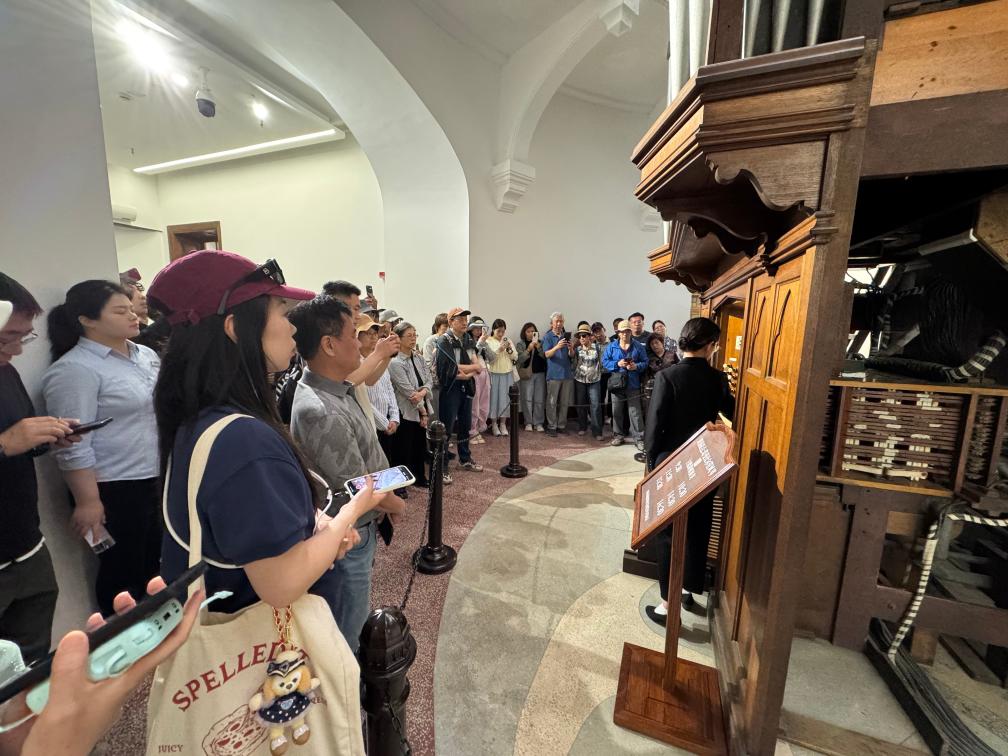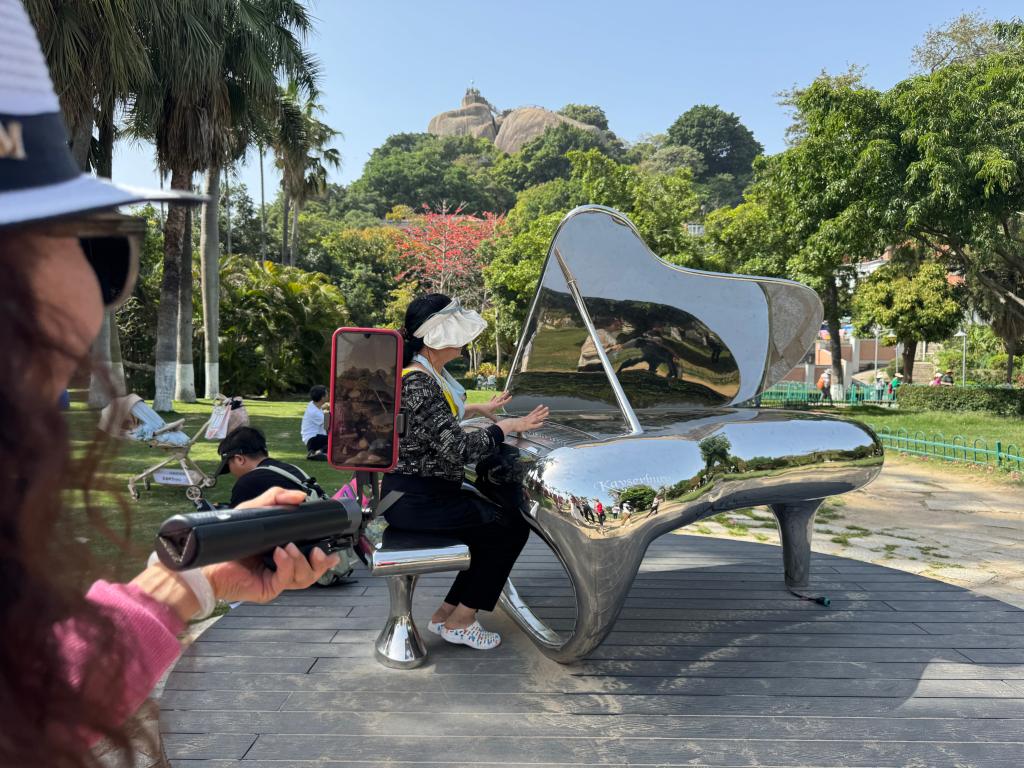Xinhua News Agency, Xiamen, April 28th Title: Xiamen Gulangyu: A journey to the "Qin Island" with a gathering of art
Xinhua News Agency reporter Yan Zhihong

"Wow! It's great!" After the song "Leaf in a minor", there was a burst of cheers in the crowd. The 6-year-old performer Jin Yang also politely turned around to thank the onlookers. A scene where citizens and tourists spontaneously perform piano improvisation often appears on Gulangyu, Xiamen.
Gulangyu, known as the "Qin Island", has multiple shared pianos placed across the island. Just make a free appointment on the WeChat official account and you can enjoy the fun of playing among the crowd surrounded by beautiful scenery.
Check in for the Xunyin has now become an important reason why some music lovers have visited Gulangyu many times.
From the former site of HSBC Bank Mansion to Riguangyan Tianfeng Pavilion, from Shuzhuang Garden to Gulangyu Concert Hall, 8 shared piano playing points and 3 concert living rooms almost cover the entire island's classic landscape points. "We checked in for 3 points today, and we will continue to finish all the points in the future." Ms. Huang, a mother of a child in Jinyang, told reporters that Gulangyu is famous for its piano. It is a happy thing for children to practice piano in such an environment and get the appreciation and blessings of tourists.

The 6-year-old performer Jinyang plays on a shared piano in Gulangyu. Photo by Xinhua News Agency reporter Yan Zhihong
The musical charm of "Qindao" also connects ancient and modern times, allowing tourists to immerse themselves in the musical notes "traveling time and space".
In the Gulangyu Organ Art Center, the "Kasaon 700" organ exudes charming charm under the light. As the largest organ in Asia, it has been baptized for nearly two centuries. After being restored by engineers, it is like a revitalized elder, standing waiting to appreciate it.
Amid the melodious sound of Tokata in D minor, the citizens and tourists in the venue were all amazed. "This time I came here to record the sound of the organ playing, and I went back to play it for the children who were studying music to slowly savor it." Ms. Jiang, a tourist from Sichuan, flew thousands of miles just to listen to the solo of this "centenarian".
"The organ has undergone an evolution process from mechanical to pneumatic to electronics, and engineers are still exploring and improving." In the Bagua Building, a scenic spot in Gulangyu, a unique organ restoration class officially started.
Faced with hundreds of tourists and spectators from all over the country, Liu Jiajie, chief organ maintenance engineer, was explaining how to restore the old organ. It was also him who, together with more than 40 engineers from more than a dozen countries, spent four years restoring the "Casaáon 700" organ. From time to time, people raised their hands to ask questions in the audience, and a strong academic atmosphere filled the audience.

Tourists understand the working principle of the organ in the Bagua Building. Photo by Xinhua News Agency reporter Yan Zhihong
The integration of classical and modernity, Gulangyu is still performing the interweaving and fusion of art.
Yanping Cinema, founded in the 1920s, played an important role in Gulangyu as a "international community". In the two-story building, the first floor was once the most modern vegetable market in southern Fujian, while the second floor was used for storytelling, performing arts and playing movies, which can be described as an early "commercial complex".
During this year's Spring Festival, the puppet show, Gaojia opera and Nanyin exhibition with strong southern Fujian characteristics were staged here one after another, and citizens and tourists can watch the opera and taste tea here. "The Gulang Island, which is full of literary and artistic ensemble, is back!" Some older islanders couldn't help but sigh.
At Gulangyu Foreign Cultural Relics Museum, the artistic adventure exhibition of "Chinese Dragon and French Lily" attracted countless audiences to stop and watch. In this building completed in the 19th century, there are many exhibits that reflect the exchanges between China and France during the Kangxi period of the Qing Dynasty. From enamel porcelain to Western medicinal oils, to pocket watches full of ingenious designs, every exhibit silently tells the story of the integration of Chinese and Western culture and art.
"I didn't expect that King Louis XIV and the Chinese Emperor had such a history of dating. It was really wonderful." A French tourist listened to the explanation and pressed the shutter to freeze these interesting moments in history.

Tourists took a photo with piano models in Gulangyu. Photo by Xinhua News Agency reporter Yan Zhihong
"Gulangyu has witnessed the collision and exchange of Eastern and Western cultures and arts in the past 200 years. Today, Gulangyu has not only retained the background of traditional culture, but also incorporated the inspiration of modern art." Lin Yuefeng, director of the Gulangyu Management Committee, said that with the arrival of the May Day holiday and the peak of summer tourism, Gulangyu will continue to create an immersive art journey, allowing citizens and tourists who land on the island to experience more "new things" in the "old attractions".